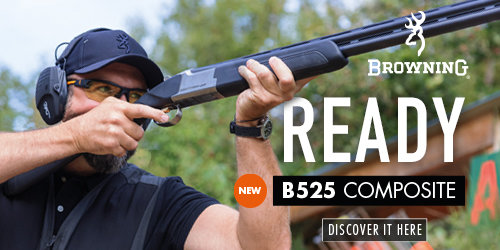Calibre choice guide for Air Rifles – a personal opinion
Although the personal skill/experience aspect of shooting is very important, there is information available from skilled people and manufacturers who have done proper tests both in the field and on the range. I don’t know the full answer and I am not an expert - but you don’t have to be to be able to read other peoples test results and opinions. Personal accuracy is absolutely essential if you are hunting. However, good technical information is also essential if you want to make the best personal choice of equipment.
I have read a lot of published tests and anecdotal evidence on the internet. Getting to grips with ballistics was very difficult to start with, and I still find it very complicated. I have to say though, if you strip out legacy opinion and subjective opinion the picture to me does not now appear too confusing. Anyway here goes:
8 to 10ft/lb ultra low recoil for shorter range targets
>> Go for .177
Reasons:
A recoiling .177 rifle which has been well tuned and is running at between 8 and 10 ft/lb may well have a recoil reduced to the point where the gun gives excellent accuracy at ranges where its low power is not a disadvantage (Eg. Shorter range targets). It still will not compete effectively with a non-recoiling gun like a PCP but it will be more accurate against 12ft/lb springers at shorter range.
11.5ft/lb non-recoiling for targets:
>> Go for .177
Reasons:
Accuracy (flat trajectory). For non-recoiling rifles there is no contest in choice of calibre: .177 is the best trajectory at sub 12ft/lb. The trajectory of .177 is slightly better than .20 and much better than .22. at sub 12ft/lb. The trajectory of .25 at sub 12ft/lb is appalling.
11.5ft/lb non-recoiling for hunting:
>> Go for .20
Reasons:
1) Down range energy. Combination of weight to frontal surface area factors gives .20 a peculiar advantage in energy retention (and in resistance to cross wind).
2) Trajectory. .20 is nearly as good as .177 and much better than .22.
.25 is abysmal.
3) Destructive attributes. The increase in the destructive effect of .20 over .177 is much more than you would expect if you just compared the difference in calibre diameter. Because of its penetration advantage over .22 the destructive effect of .20 is claimed (presumably by in the field experience) to be better than .22. Unfortunately there appears to be a shortage of proper test results to prove this particular aspect. BASC are currently doing some “mass of destruction” tests for hunting with different types of shotgun pellets and hopefully they will one day spend some of our money on similar tests for air gun pellets.
11.5ft/lb with any level of recoil, for targets or hunting
>> Go for .20.
Reasons:
1) Accuracy: The piston in a recoiling .177 needs to give such a big thrust to get a .177 pellet to 12ft/lb that the significantly bigger recoil effects your aim to the point where you more than loose any advantage over .20 in terms of trajectory. However, this accuracy factor does not apply when you move from .20 to .22 because, although a .22’s piston gives a lower thump, the poor trajectory of the .22 gives overall poorer accuracy.
2) Down range energy. It is said that you need 4 to 6ft/lb to kill your quarry, depending what it is. The .20 calibre is claimed to have a peculiar advantage in energy retention which is far greater than you would think when just comparing pellet mass to pellet frontal area.
3) “Mass of destruction”. At longer ranges the .20 has the best combination of penetration and “mass of destruction” over both .177 and .22.
Over 12ft/lb, non-recoil and recoil, for targets
I think that FT and HFT disciplines are sub 12ft/lb so have not commented here.
Over 12ft/lb (FAC), non-recoil and recoil, for hunting
>> Go for .20
Reasons, for any given muzzle energy:
1) The higher the energy the less the difference in “flatness” (horizontal) between the trajectory of the .177 and the .20
2) .20 gives a better “mass of destruction” than .177
3) You can reach a point where the peculiar wind resistance advantages of .20 means that it’s trajectory is “straighter” and therefore more accurate. Note, there is a difference between horizontal and straight: A perfectly flat (i.e. horizontal when viewed from the side) trajectory may, when viewed from above, be banana shaped if there is a breeze.
NOTES:
- Weights and behavioural idiosyncrasies of pellets are important, and I didn’t see enough information on how different weights effected trajectory.
- Some FAC air rifles are appearing from the far east with high twist rate barrels, and guess what – the .20 caliblre is looking good there as well.
- On the negative side Crossman, probably under the influence of an accountant and not a businessman, may be dropping the .20 premier – but, other than satisfying some short sighted accountancy issue, such a decision will most likely do them more harm than good as it is likely that nothing will now prevent .20 from ultimately outselling .22 at some point in the future.


